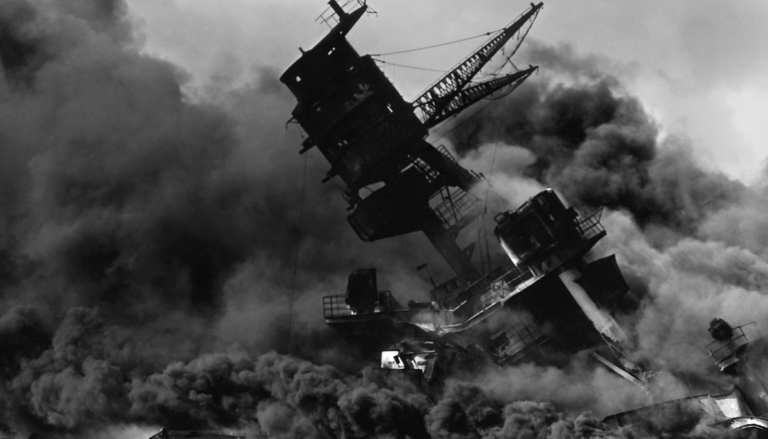In 1941, President Franklin Delano Roosevelt called the December 7 attack on Pearl Harbor: “A date which will live in infamy.” It marked the pivotal moment that drew the United States into World War II.
Pearl Harbor Remembrance Day: “A date which will live in infamy.”
The attack on Pearl Harbor occurred on December 7, 1941, as well as other locations in Hawaii, killing 2,403 service members and civilians. The attack marked the pivotal moment leading the United States into World War II.
A day after the attack on Pearl Harbor, then-President Franklin Delano Roosevelt made this now-famous statement:
“Yesterday, December 7, 1941— a date which will live in infamy— the United States of America was suddenly and deliberately attacked by the naval and air forces of the Empire of Japan,” Roosevelt said.
“It will be recorded that the distance of Hawaii from Japan makes it obvious that the attack was deliberately planned many days or even weeks ago,” Roosevelt went on to add.
“The attack yesterday on the Hawaiian Islands has caused severe damage to American naval and military forces,” Roosevelt continued in describing the tragedy. “I regret to tell you that very many American lives have been lost. In addition, American ships have been reported torpedoed on the high seas between San Francisco and Honolulu.”
Eighty years later, the survivors of the attack barely number in the dozens, the Daily Wire reported.
This morning, the USS Arizona tweeted: “Good morning from the USS Arizona Memorial. Pearl Harbor is peaceful this morning just as it was 80 years ago. 24 hours later the United States would be at war.”
Countdown: How the attack played out
On December 7, 1941, at 6:10 a.m. local time, the USS Condor sighted a periscope. Shortly after that, the first wave of Japanese fighter planes were airborne.
At 6:45 a.m., the first American shots were fired, even though the U.S. was not officially at war, as sailors aboard the USS Ward fired on a Japanese submarine.
At 6:53 a.m., the USS Ward radioed Navy headquarters about the engagement, but the decoding process delayed the message.
At 7:02 a.m., unidentified aircraft were spotted heading toward Hawaii, but believing they were American B-17s, they disregarded the warning at 7:20 a.m.
By 7:40 a.m., the first wave of Japanese fighter planes were flying over Oahu.
At 7:55 a.m., the Japanese planes began their assault.
At 8:10 a.m., the USS Arizona exploded.
President Biden and First Lady visit World War II Memorial
On Pearl Harbor Remembrance Day, President Joe and First Lady Jill Biden commemorated the 80th anniversary of the Japanese attack by visiting the World War II Memorial in Washington on Tuesday.
Last week, President Biden issued a proclamation in which he gave “thanks to the Greatest Generation, who guided our Nation through some of our darkest moments and laid the foundations of an international system that has transformed former adversaries into allies.”
The first lady laid a bouquet of flowers at the base below the New Jersey pillar of the memorial. Then she touched a wall softly, in honor of her father, Donald Jacobs, who served as a U.S. Navy signalman in the war, ABC reported. The President and First Lady spent a moment at the wall and made another stop at the Pacific arch on the southern side of the plaza.





